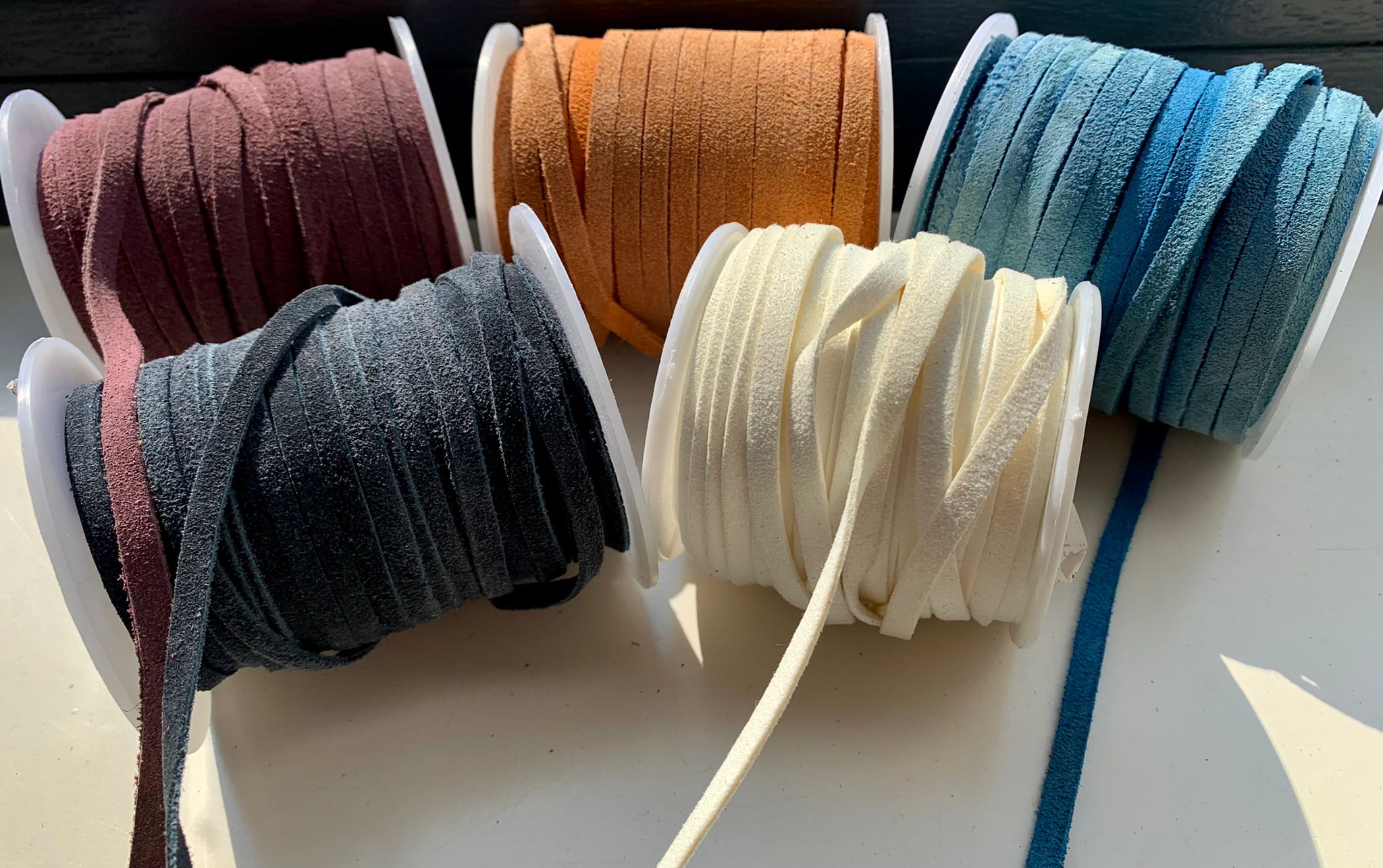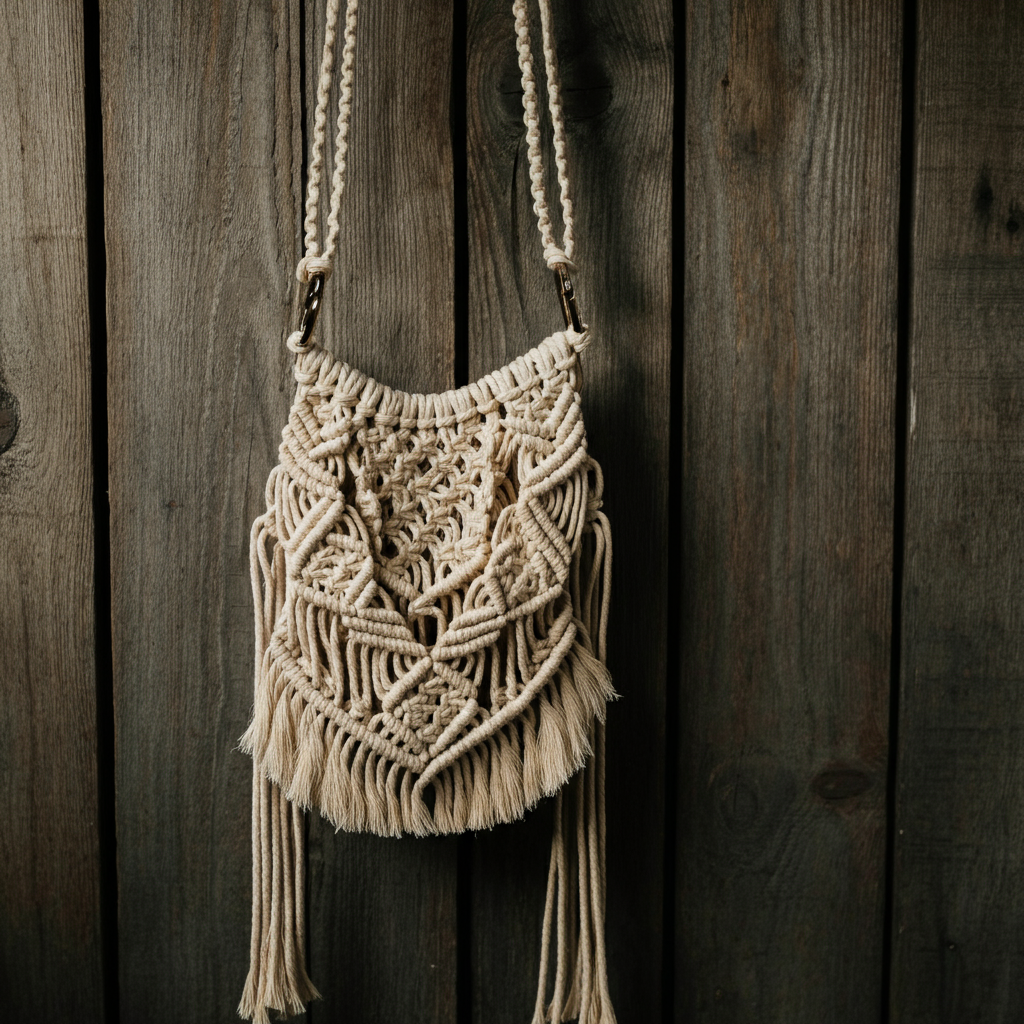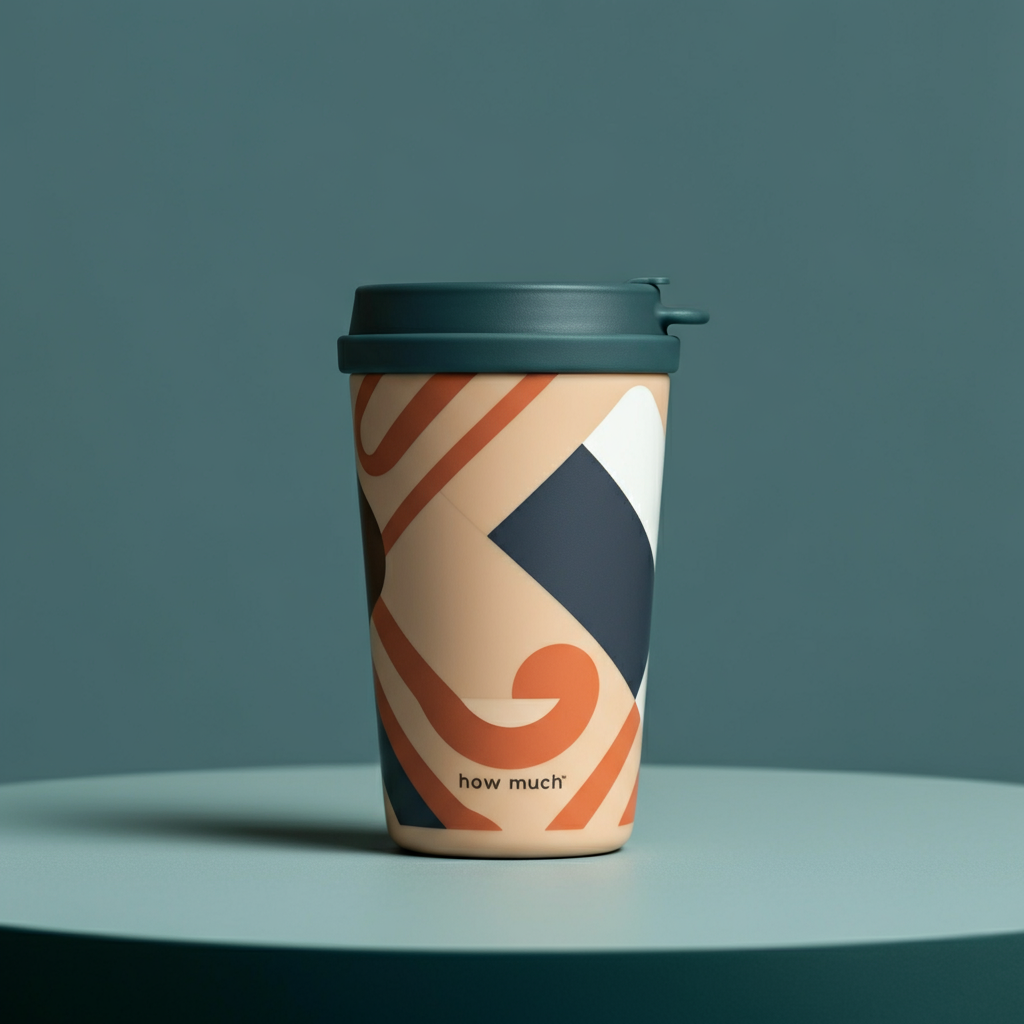In an age where conscientious consumption is not just a buzzword but a deeply embraced lifestyle, the narrative on leather is undergoing a transformative shift. As we become more aware of the environmental impact of our choices, sustainable leather cord production emerges as a pivotal chapter in the broader saga of ethical fashion. It resonates not only with the eco-cognizant consumer but also with industry players striving to make a positive difference.
This post serves as a guiding compass for leather manufacturers, producers, and even the most ardent fans of leathercraft. It leads us towards a future where elegant design seamlessly intertwines with ecological responsibility, where every stitch and every cut is made with a conscious commitment to preserving our planet's resources. Together, we can create a world where style and sustainability walk hand in hand, forging a new era of fashion that is both beautiful and mindful of our Earth.
The Imperative of Sustainability in the Leather Industry
In the intricate tapestry of the fashion industry, leather stands as a timeless fabric cherished for its luxurious feel and enduring charm. However, the leather industry's long-standing traditions and high demand have undeniably contributed to a significant environmental impact. But this impact is not an insurmountable obstacle; rather, it presents an opportunity to innovate, reimagine, and reshape the narrative of leather through sustainable practices that prioritize both quality and style.
By embracing sustainable methods, such as responsible sourcing of materials and implementing eco-friendly production processes, the leather industry can forge a path towards a more sustainable future. Imagine a world where the allure of leather is not tarnished by its environmental footprint, but rather enhanced by the knowledge that it was crafted with ethical considerations in mind.
From the careful selection of raw materials to the implementation of efficient waste management systems, every step towards sustainability in the leather industry contributes to the preservation of our planet's resources. By championing sustainable practices, we can create a future where leather remains a symbol of elegance and craftsmanship, while also being a testament to our commitment to the well-being of our planet.
Let us embark on this journey together, where sustainability and style seamlessly intertwine, forging a new era for the leather industry. Together, we can weave a story of responsible fashion that stands the test of time.
Unveiling the Environmental Footprint of Traditional Leather Production
Delving into the intricate workings of conventional leather-making reveals a deeply concerning panorama of harsh environmental realities. The industry's heavy reliance on finite natural resources, such as land and water, paints a vivid picture of the ecological toll it exacts. Moreover, the staggering water footprint associated with the production process serves as a stark reminder of the immense strain placed on our water resources. And let us not forget the significant carbon emissions that accompany the entire lifecycle of leather, leaving an indelible mark on our planet's delicate ecosystem. It is evident that the traditional leather industry operates at a daunting ecological cost, necessitating a reevaluation of its practices in the pursuit of sustainable alternatives.
Carbon Emissions and Deforestation
The leather industry is closely intertwined with the cattle industry, which plays a significant role in greenhouse gas emissions and land use transformations, thus contributing to climate change on a global scale. Moreover, during the tanning process, a critical stage in leather production, the use of toxic substances is prevalent. These toxic chemicals have the potential to leach into the earth, leaving behind a trail of contamination that poses serious environmental concerns. The detrimental effects of the leather industry highlight the need for sustainable and eco-friendly alternatives in order to mitigate its negative impact on the planet.
The Water Woe
Leather, known for its insatiable thirst, requires an abundant supply of water during the tanning process. This excessive demand often leads to the depletion of local water sources and, in severe cases, contributes to water pollution. As a result, the leather industry has become a significant player in the global water crisis, engaging in an inharmonious waltz with a resource that is undeniably life's elixir. The delicate balance between leather production and the availability of fresh water underscores the urgent need for sustainable practices in this industry.
Exploring Sustainable Leather Production Techniques
In recent years, there has been a noteworthy shift towards sustainable leather production, driven by innovative tools and fresh perspectives. This movement aims to create a more harmonious narrative by carefully re-evaluating each step of the process, from sourcing to tanning. By embracing this approach, a new lexicon of 'green' leather is being meticulously crafted, reflecting a commitment to both environmental and ethical considerations. Through the adoption of sustainable practices and the integration of cutting-edge technologies, the industry is striving to redefine the future of leather production, ensuring a more sustainable and responsible approach for years to come.
Alternatives to Tradition
This exciting chapter in the rebirth of leather production is filled with a myriad of alternatives. One such alternative is vegetable tanning, a process that harnesses natural tannins derived from plant matter, resulting in a sustainable and eco-friendly approach. Vegetable tanning utilizes tannins found in various plant sources to create a durable and environmentally friendly material. Unlike conventional tanning processes that often involve harmful chemicals such as chromium salts, vegetable tanning relies on natural compounds derived from leaves, bark, and fruits of certain trees and plants. So it employs tannins, which are polyphenolic compounds naturally present in plants. Common sources of tannins used in vegetable tanning include oak, chestnut, quebracho, and mimosa trees. These tannins bind to the collagen fibers within animal hides, effectively preserving and stabilizing the leather. One of the primary advantages of vegetable tanning is its minimal environmental impact compared to conventional tanning methods. Since it relies on natural ingredients, it reduces the release of toxic chemicals into the environment, minimizing pollution of waterways and soil contamination. Vegetable-tanned leather is also biodegradable, meaning it can break down naturally over time without causing harm to the environment. This makes it a more sustainable choice compared to synthetic materials or leathers processed with harsh chemicals, which can persist in the environment for long periods.
Another method gaining traction is chrome-free tanning, also known as chrome-free leather processing or chrome-free leather tanning, which eliminates the use of harmful chromium salts, commonly used in conventional leather tanning processes, further reducing the environmental impact. Chromium is typically employed in the form of chromium sulfate or chromium salts during the tanning process to stabilize collagen fibers in the animal hides and convert them into durable leather. However, the use of chromium in leather tanning poses significant environmental and health concerns. Chrome-free tanning offers an alternative approach that eliminates these drawbacks.
The relentless pursuit of earth-friendly techniques in the leather industry is driving innovation and paving the way for a more sustainable future.
Recycling and Upcycling Leather
Resurrecting leather through recycling and upcycling prolongs its life cycle, turning waste into a valuable resource. By repurposing discarded leather products and transforming them into new creations, we not only champion circularity but also contribute to a more sustainable future. This innovative approach not only embraces the past by giving old materials a new life but also moulds the future by reducing waste and minimizing environmental impact. Through this commitment to sustainability, we can create a world where fashion and responsibility go hand in hand.
Promoting Sustainability in Leather Manufacturing
Implementing sustainable practices in a leather factory is like conducting a symphony. It demands precision, synergy, and a collective vision that resonates through each department. Just as a conductor harmonizes the instruments, sustainable practices seamlessly integrate with the production processes, ensuring minimal environmental impact. From sourcing eco-friendly materials to optimizing energy usage, every aspect of the factory operations is meticulously orchestrated to create a symphony of sustainability.
Eco-Friendly Factories
In today's world, modern technologies have emerged as powerful allies in promoting a cleaner and greener manufacturing sphere. With an increasing focus on sustainability, eco-friendly factories are embracing a wide range of solutions to minimize their environmental footprint. These include harnessing renewable energy sources, implementing stringent waste management policies, and adopting state-of-the-art filtration systems. By integrating these innovative practices into their operations, these factories are not only reducing their impact on the environment but also setting a new standard for sustainable manufacturing.
Ethical Sourcing and Waste Reduction
Every grain of sand matters, and sourcing leather ethically is a bedrock of sustainability. By carefully selecting suppliers who employ by-products from the meat industry, we ensure that no part of the animal goes to waste. In addition, our stringent regulations on waste management further contribute to our commitment to environmental responsibility. These measures act as tributaries, feeding into the river of our holistic approach to sustainability, ensuring a brighter future for our planet.
The Allure of Sustainable Leather: Benefits and Beyond
Sustainability in leather production entails a wide range of benefits that reverberate throughout the entire value chain, from the boardroom where strategic decisions are made to the customer's closet where ethical fashion choices are embraced. By adopting these practices, companies not only fulfill their moral obligation to protect the environment and promote social responsibility but also gain a competitive advantage in the market by aligning with the growing demand for sustainable and eco-friendly products.
Reduced Environmental Impact
A steadfast commitment to sustainable practices not only paves the way for a discernible reduction in the leather industry's environmental footprint but also serves as a powerful testament to the boundless potential of innovation in harmonizing the realms of industry and nature. By embracing eco-friendly techniques and materials, such as alternative leather substitutes and responsible manufacturing processes, the industry can forge a path towards a greener future, where the beauty of fashion coexists seamlessly with the preservation of our planet's precious resources.
Brand Reputation and Customer Loyalty
An aura of ethical elegance gracefully weaves through brands that passionately champion sustainable leather production, meticulously sourcing materials that leave a minimal environmental footprint. This mindful approach not only garners the unwavering loyalty of an ever-vigilant customer base but also positions these brands as trailblazers in the vanguard of sustainability. With every product they create, these ethical pioneers set a shining example for others to follow, their very names becoming synonymous with responsible and conscious acquisition.
Meeting Consumer Demands
The awakening of a discerning consumer base that values transparency and ethical sourcing is not just a passing trend but a market reality that cannot be ignored. In this ever-evolving consumer landscape, brands must recognize that sustainable leather is not merely an option but a necessary mandate to future-proof their relevance and resonance. By prioritizing sustainable practices and embracing ethical sourcing, brands can establish a strong foundation built on trust and authenticity, fostering a lasting connection with conscientious consumers who seek products that align with their values.
Case Studies and Exemplars of Sustainability
The success stories of brands that have traversed the path of sustainable leather production serve not just as inspiration but as guiding beacons for others to navigate this complex and ever-evolving domain. These brands have implemented innovative practices, such as utilizing alternative materials and adopting ethical sourcing methods, to ensure the longevity and environmental friendliness of their products. By sharing their experiences and lessons learned, they provide invaluable insights for those seeking to embrace sustainable practices in the leather industry.
Leaders in Sustainable Leather
By spearheading innovative initiatives that embrace sustainable tanning and sourcing practices, these industry pioneers have set new benchmarks for excellence and environmental stewardship. Their remarkable journeys from traditional craftsmanship to conscious creation reflect the transformative power of sustainable management in leather production. Through their dedication to ethical practices and the preservation of our planet, they inspire and lead the way towards a more sustainable future for the entire industry.
Collaborations and Innovation across Industries
Partnership weaves a rich tapestry in the realm of sustainable leather, as fashion and jewelry brands unite to reimagine the craft of luxury. Drawing inspiration from nature's diverse palette, these collaborations bring forth a stunning array of necklaces, bracelets, and accessories that showcase the seamless fusion of sustainable leather and conscious design. Each piece is meticulously crafted, reflecting a harmonious blend of artistry and ethics, ushering in a new era of opulence that celebrates both style and sustainability.
Seamless Fusion: Quality, Style, and Sustainability
Sustainable wholesale round leather cord, a marvel of conscious craftsmanship, stands as a shining beacon, illuminating a path where exceptional quality and exquisite style effortlessly coalesce with unwavering ecological integrity. It serves as a profound reminder that elegance and ethics need not be adversaries but rather harmonious partners that elevate and enrich each other, creating a truly timeless and meaningful narrative.
Conclusion
The dichotomy of luxury and environmental responsibility can be beautifully reconciled through the practice of sustainable leather production. It is not merely a compromise but rather a harmonious convergence, a meticulously choreographed symphony of elegance and ethics. As custodians of this precious planet, the narrative we carefully craft with our choices and actions in the leather industry becomes a tapestry of defining moments. This is our time to lead, to innovate, and to weave a legacy of responsible luxury that transcends generations, leaving an indelible mark on the world we inhabit and the legacy we leave behind. Let us embrace this opportunity to create a sustainable future that is both opulent and conscientious, a testament to our unwavering commitment to preserving the beauty of our planet for generations to come.
Sustainability is not merely a finish line to cross; it is a continuous journey that we must embark upon. As we find ourselves on the precipice of a transformative and sustainable revolution in the leather industry, the call to action becomes resoundingly clear. Each and every individual within this industry carries the responsibility of being a steward of change, while every brand possesses the potential to serve as a catalyst for progress. Together, let us envision a future where the lustrous allure of leather is not only a testament to artistic craftsmanship but also a tangible symbol of our unwavering commitment to preserving and nurturing the world we all inhabit. The time has come for us to unite and make leather not just a legacy but a shining exemplar of sustainable elegance, radiating its brilliance for generations to come.




